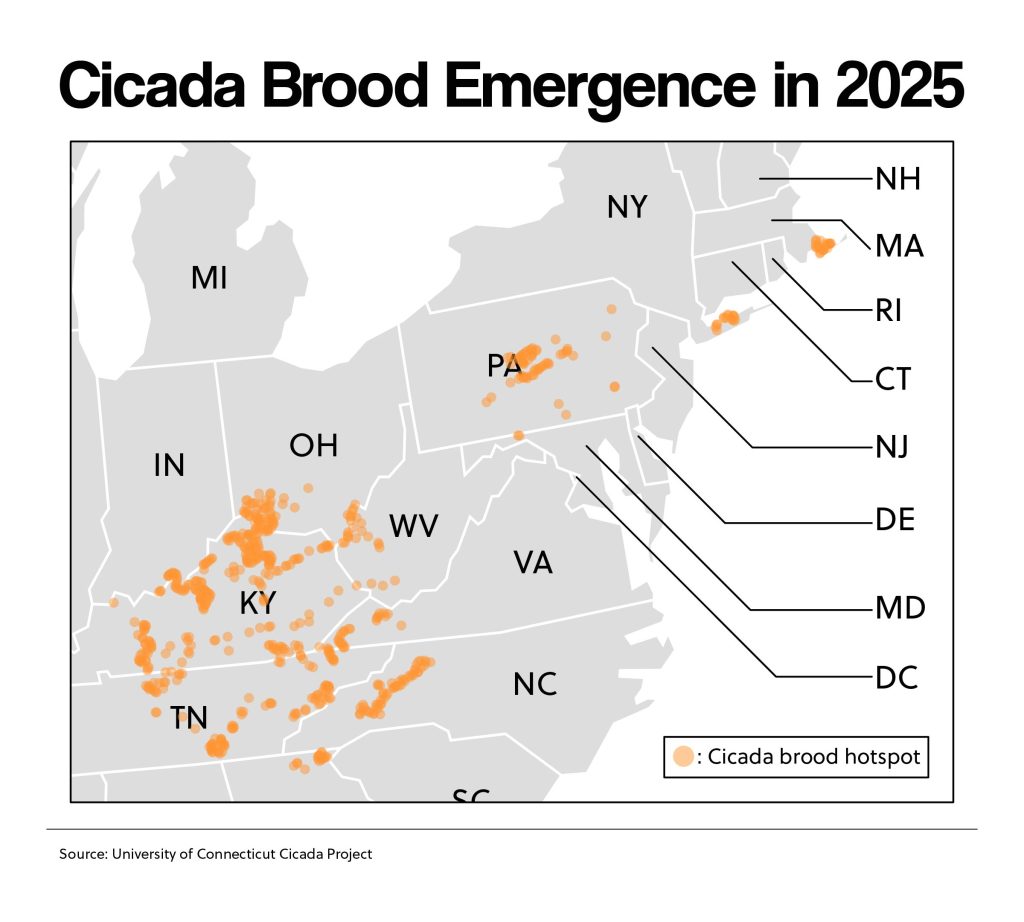'They're Back-ck-ck-ck-ck!': Cicadas, and Their Chittering Drones, Return
May 1, 2025

The Eastern US weathered a cicada storm last spring. Two broods, one of 13-year cicadas and one of 17 years, burrowed out of the soil to fill the air with billions of the bugs and their loud drone. Now a new batch is arriving to take their place.
Brood XIV is the name given to this year’s crop of black-and-gold buzzers. It last emerged in 2008. Their life cycle consists of a brief, intense spring of mating and egg-laying. It's then followed by 17 years of incubation in a larval state below ground. When they have matured, they will dig their way toward the surface and wait for temps to warm. They come out when soil reaches a constant 64 degrees Fahrenheit or above.
Those in Brood XIV’s range have a noisy spring ahead. They will see millions of crusty, crunchy cicada shells covering the ground. Shortly after they emerge, cicadas climb the nearest tree (or structure), then molt out of their shell. In their adult form, they’re about 1.5 inches long, with shiny black shells and large orange eyes. The veins in their wings are a striking gold color. They don’t sting or bite. But they do make a lot of noise.
“They can be very loud and sometimes people will report them as a nuisance because of the noise,” entomologist Katherine Dugas told The Hartford Courant. “But they are ultimately harmless and will not really permanently damage a tree either.”
This year, Brood XIV will appear by the millions between early May and late June. Large groups will emerge in Kentucky, Tennessee, and parts of nearby states. Smaller groups will also pop up in Massachusetts, New York, and Pennsylvania.
Reflect: Why do you think some animals or insects are misunderstood or feared, even if they aren't dangerous?





